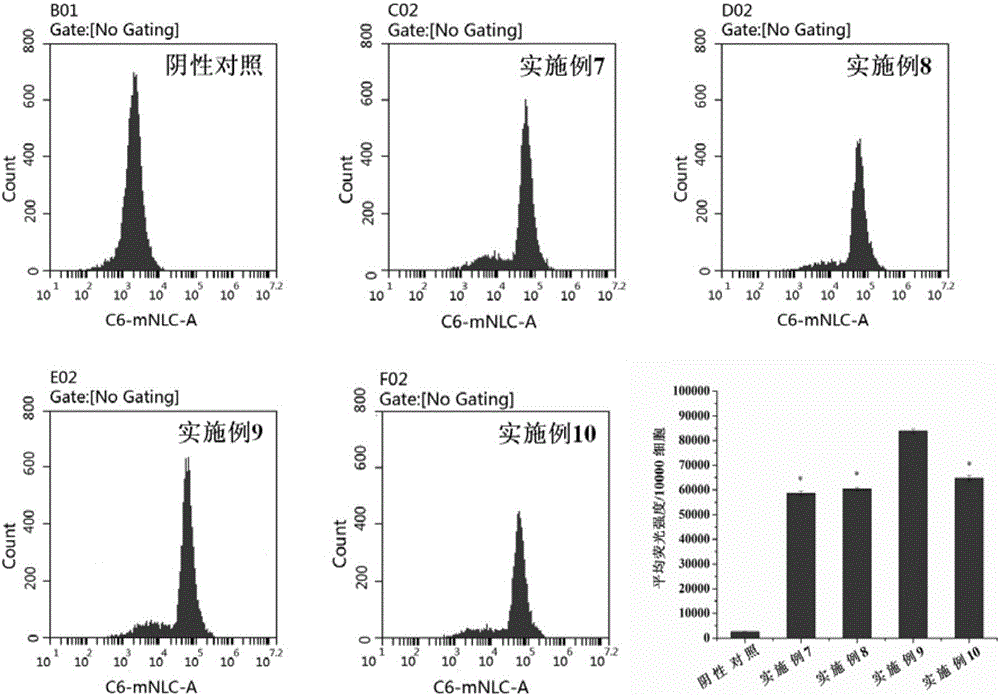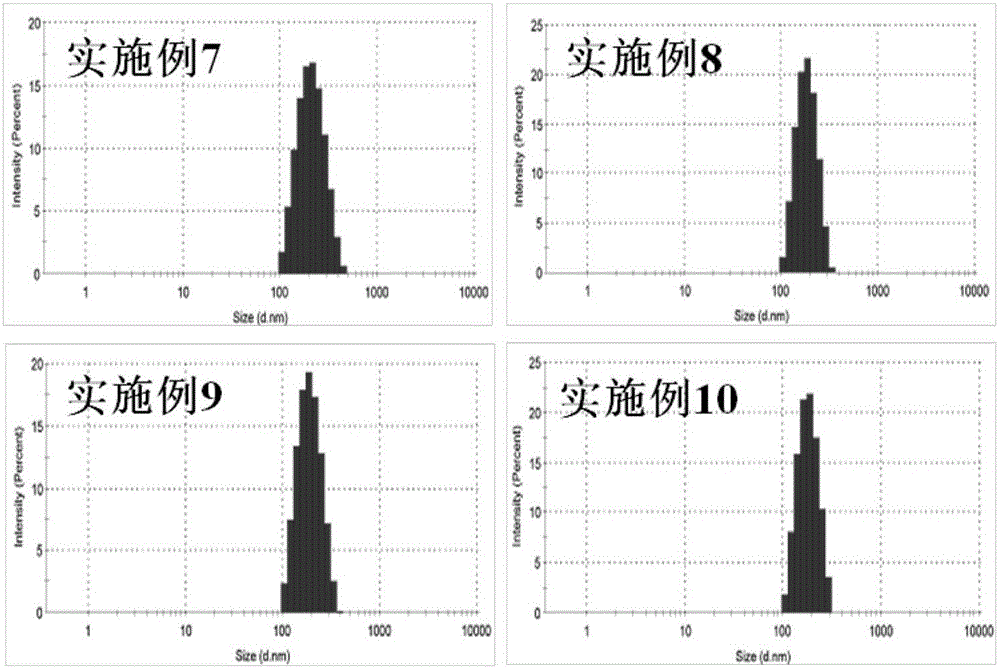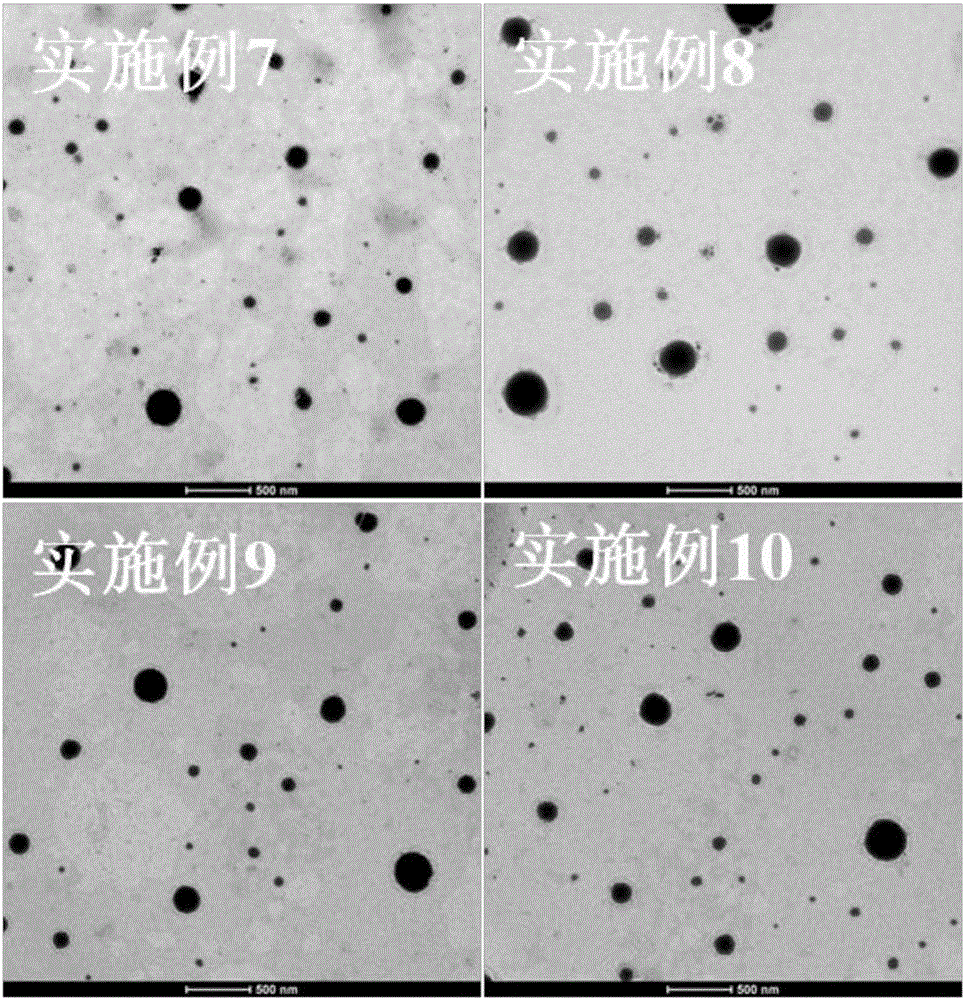Phosphatidylserine-modified curcumin nanoparticles
A technology of phosphatidylserine and curcumin is applied in the field of biomedicine to achieve the effects of increasing intake, improving anti-inflammatory efficacy and low cost
- Summary
- Abstract
- Description
- Claims
- Application Information
AI Technical Summary
Problems solved by technology
Method used
Image
Examples
Embodiment 1
[0036] Embodiment 1: the preparation method selection of the curcumin nanoparticle of phosphatidylserine modification
[0037] The common preparation methods of nano-lipid carriers mainly include high-pressure homogenization method, melt emulsification method, melt ultrasonic method, solvent diffusion method, solvent emulsification evaporation method, high-speed stirring ultrasonic method, microemulsion method, etc. Among them, the high-pressure homogenization method requires a higher temperature, usually about 80°C, and heat-sensitive drugs are not suitable for preparation by this method. However, it is difficult to prepare nanostructured lipid carriers with smaller particle size and narrower distribution by cold high-pressure homogenization method. Therefore, in combination with the characteristics of the drug, the following preparation methods were screened out for investigation.
[0038]1.1 Emulsification evaporation method - low temperature curing method
[0039] In mol...
Embodiment 2
[0045] Embodiment 2: Screening of phosphatidylserine / phospholipid molar ratio in curcumin nanoparticles modified by phosphatidylserine
[0046] According to the result in Example 1, the curcumin nanoparticles modified by PS are prepared by film dispersion method, and other conditions are fixed, and the preparation of PS modified amount (mol%) is respectively 0%, 4%, 8%, 12%, 20% curcuma prime nanoparticles. The particle size was measured with a laser particle size analyzer, and the encapsulation efficiency was determined. Investigate the effect of PS mole ratio on the particle size and encapsulation efficiency of curcumin nanoparticles, so as to determine the range of effective PS mole ratio for follow-up experiments.
[0047] Table 1: Particle size, polydispersity coefficient and encapsulation efficiency of curcumin nanoparticles with different PS modification amounts (mol%) (Mean±SD, n=3)
[0048] PS modification amount (mol%)
[0049] The results showed that whe...
Embodiment 3
[0050] Example 3: Phosphatidylserine-modified curcumin nanoparticles formulation optimization
[0051] The amount of fixed PS (mol%) is 8%, and the particle size and encapsulation rate are used to investigate the indicators, and the film dispersion method is used to prepare curcumin nanoparticles. , pH value of phosphate buffer solution and other prescription factors were optimized.
[0052] 3.1 Selection of phospholipid types
[0053] Fix other conditions unchanged, respectively use domestic common soybean phospholipids, soybean phospholipid S100 from Lipoid Company of Germany, and egg phospholipid PC 98-T from Shanghai AVT Company to prepare PS-modified curcumin nanoparticles by thin film dispersion method, and use laser particle size analyzer Measure its particle size and determine its encapsulation efficiency.
[0054] Table 2: Particle size, polydispersity coefficient and encapsulation efficiency of curcumin nanoparticles of different phospholipid types (Mean±SD, n=3) ...
PUM
| Property | Measurement | Unit |
|---|---|---|
| The average particle size | aaaaa | aaaaa |
| Electric potential | aaaaa | aaaaa |
Abstract
Description
Claims
Application Information
 Login to View More
Login to View More - R&D
- Intellectual Property
- Life Sciences
- Materials
- Tech Scout
- Unparalleled Data Quality
- Higher Quality Content
- 60% Fewer Hallucinations
Browse by: Latest US Patents, China's latest patents, Technical Efficacy Thesaurus, Application Domain, Technology Topic, Popular Technical Reports.
© 2025 PatSnap. All rights reserved.Legal|Privacy policy|Modern Slavery Act Transparency Statement|Sitemap|About US| Contact US: help@patsnap.com



